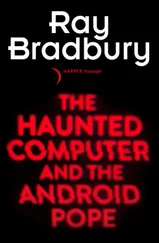Baker believed that graphics would become increasingly important in the home computer market because, as he puts it: “People communicate with each other visually, and computers aren’t going to be usable to the majority of the population until the quality of computer graphics increases.” With that in mind, Bill and Dan started looking for their next entrepreneurial frontier. Before long, they found it in the form of a small startup software company called Island Graphics, owned by Steven Dompier, who had been one of the founding members of the Homebrew Computer Club.
Island Graphics was already turning out some excellent computer graphics packages. So in 1984, instead of buying a big yacht and sailing off into the sunset, Bill and Dan bought into the company—just before its fortunes, like those of many other software companies that year, sailed right into the teeth of a major upheaval that stemmed from the sudden and sharp decline in the market demand for software—the “shakeout, as it came to be called. As of this writing, Dan Remer is running the company, although Baker retains his interest.
One of Baker’s favorite lines is from a Kenny Rogers song: “You’ve got to know when to hold ‘em, know when to fold ‘em." One year after he sold IUS, it looked as if he ha chosen exactly the right time to fold ‘em, given the grim year that 1984 turned out to be. And whether or not Island Graphics survives the long-term effects of 1984’s shakeout and becomes the same kind of success IUS was, Baker is financially secure—and the IUS-IBM deal is firmly established in industry legend.
Not all business-oriented software publishers fared as well as Baker’s, however. Another entrepreneurial partnership, whose efforts predated Baker’s and ultimately created a substantial portion of the business software market, went from a meteoric industry leader to a troubled survivor in a few tumultuous years. The stormy relationship between VisiCorp, the marketing company founded by Dan Fylstra and Peter Jennings, and Software Arts, the software development company started by Bob Frankston and Dan Bricklin, the creators of VisiCalc, was one of the grimmer, more ironic tales of the early software entrepreneurs.
In 1978, the Radio Shack salesman who sold me my first personal computer told me about a Boston-based company called Personal Software that was selling a TRS-80 program that could actually play chess. This was a very exciting prospect. Game software—or any software, for that matter— wasn’t abundant in 1978. I was having fun writing my own games, but a microcomputer version of a chess-playing program was far beyond my level of programming ability.
I was living in Maine at the time, but as my parents lived in Boston then, I made an effort to locate the chess software the next time I visited my family. When I called Personal Software’s number, which the computer salesman had given me, the person who answered confirmed that the company indeed sold a program called MicroChess. But when I went over to their address in Allston, a Boston suburb, and knocked on the door, they didn’t want to let me in. The fellow who answered the door explained that they were strictly a mail-order company and weren’t allowed to sell through the door. But like any self-respecting computer enthusiast, I persisted in waving a $20 bill until he let me in.
The company headquarters weren’t exactly in a luxuriously appointed office. At that time, Personal Software was housed in the living room of an apartment. There were two tables on which were three different computers—a Commodore PET, an Apple, and a TRS-80. All were hooked up to tape recorders that were duplicating programs onto cassettes directly from the computers. The only other items in the room were a couple of unmade beds on either side of the computer tables, a few packing crates and cardboard boxes stacked in a corner, and a large bowl of peanuts. I didn’t know it at the time, but that room housed the beginnings of a famous software publishing bonanza.
Peter Jennings was the author of that chess program I was so anxious to find. He and a Harvard Business School student by the name of Dan Fylstra had formed Personal Software to market MicroChess, along with a few other game programs, via advertisements in hobbyist magazines. Not long after I stumbled into their operation, Fylstra got together with another student at the Business School, Dan Bricklin, who, with his own partner, Bob Frankston, had started a company, Software Arts, and had just created a prototype of the electronic spreadsheet program that was to become famous as VisiCalc. In a meeting that took place in a local Chinese restaurant, Software Arts agreed to license Personal Software to market a more highly developed VisiCalc. That agreement between the two companies turned out to be the basis of a far more fertile and, eventually, tempestuous marriage than any of them could have initially suspected.
During that meeting in late 1978, the two companies agreed that the more polished version of VisiCalc would be Apple-compatible, would have menus to assist the unexperienced computer user, would recalculate the spreadsheet in fewer than ten seconds, and would fit in the 16 K memory that the Apple (and other personal computers) had at that time. But when they brought the polished version around for preview demonstrations, their first audiences weren’t terribly impressed. Bricklin and Fylstra’s professors at Harvard knew all about mainframe versions of electronic spreadsheets and couldn’t see the use of this “toy” version. Ironically, the other group that couldn’t at first figure out a use for the thing consisted of the folks at Apple.
Two months before the program was released, however, one person who had seen it in action was enthusiastic. He happened to be the right person. Ben Rosen, a renowned microcomputer-industry analyst and venture capitalist, wrote in his respected (and expensive) newsletter that it was “hard to imagine any serious user of a personal computer not owning—and frequently using— VisiCalc.” In the same article, he articulated a prediction that was to become an endlessly quoted cliché—that “software will soon become the tail that wags the dog” of the microcomputer industry.
By the time the program was ready for market in 1979, $100,000 of the revenues from MicroChess had been invested in the program, while Bricklin and Frankston had committed all their own resources to the gamble. Everyone involved with it was convinced that the program would sell quickly as soon as businesspeople understood what it could do. The sales figures soon confirmed their beliefs—more than 150,000 copies were sold in the first year the program was available. Ultimately, the program was to sell more than 700,000 copies, which made it the second-best-selling software product in history, surpassed only by WordStar’s estimated one million copies.
The VisiCalc partners seemed to have a marriage made in heaven—Software Arts’ software was revolutionary, and so was Personal Software’s approach to the business of marketing it. Before VisiCalc came along, software had been strictly a cottage industry. VisiCorp brought in modern mass-marketing techniques: While other publishers were still selling their product packaged in plastic bags with photocopied documentation, Personal Software, which was later renamed VisiCorp, was packaging VisiCalc in a brown and gold binder and providing with it documentation that was actually typeset and illustrated.
Rosen’s famous remark about the tail wagging the dog turned out to be accurate, judging by the claims made by computer dealers who said all the businessmen who were buying Apples did so because they wanted to use VisiCalc. When the sales of its machines shot up with the sales of VisiCalc, Apple itself changed its mind about whether anybody would find this program useful. By legitimizing what had heretofore been largely a hacker’s tool or a teenager’s game machine, all those business-suited buyers of VisiCalc broadened the mainstream market for personal computers in the early 1980s.
Читать дальше










